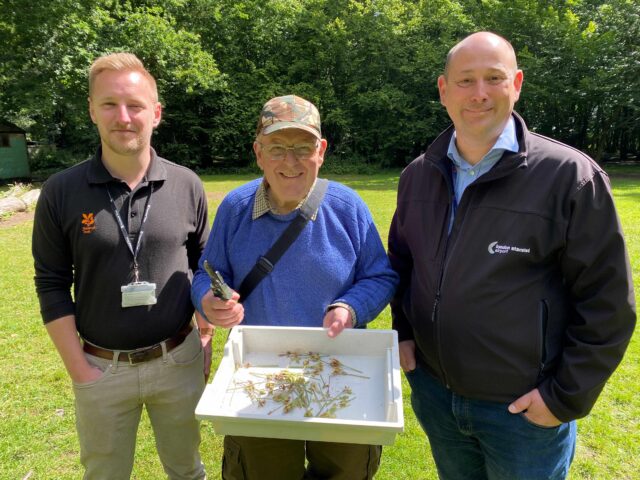The unlikely coexistence of an extremely rare flower and a busy international airport might seem surprising to some people.
However, in woodland close to London Stansted a thriving population of Oxlips is helping the National Trust in their work to save this endangered flower from extinction.
Priory Wood, located just a short distance from the airport’s runway, is home to several of these delicate yellow flowers that are found only in small parts of East Anglia.
The project involves the National Trust harvesting the seeds from the airport’s land, growing them in their propagation facility, and carefully reintroducing them to Hatfield Forest, where the flower has declined in recent years.
Grazing deer have been responsible for much of the flower’s demise in the forest, although it is hoped they will once again thrive there for future generations to enjoy.
Martin Churley, Head of Environment and Sustainability at MAG, said:
“Our work to restore the natural habitats on the land that we own around airport has created the perfect environment for Oxlips to thrive.
“Once on the brink of extinction, they are flourishing in Priory Wood, which has become a sanctuary for these beautiful flowers.
“It is wonderful to see this plant, which only grows in a few small parts of East Anglia, now providing a much-needed boost to the Natural Trust’s nature conservation efforts in Hatfield Forest.
“This project is one of many we are working on regarding the translocation of plants from airport sites as part of MAG’s commitment to biodiversity.”
James Rowland, Hatfield Forest Property Operations Manager, said:
“Oxlip (Primula Elatior) is a small, perennial, ancient woodland plant only found in small pockets of East Anglia. This nationally scarce species hasn’t been recorded in its purest form in Hatfield Forest since the 1980s due to the impact of deer and human activity.
“The discovery of pure Oxlips at a neighbouring, enclosed woodland which was once a part of Hatfield Forest, presents a rare opportunity to collect seeds, propagate and re-introduce this significant species, in an attempt to encourage a self-sustaining Oxlip population.
“The new Oxlips will be placed in specially designed enclosures next Spring, safe from the risk of browsing deer and trampling, with the hope that in the years to come, Oxlips will be a common sight at Hatfield Forest once again.”
In recent years, the airport’s environment team has been working to return several underused areas around the site back to nature.
A 2.5-acre habitat area created to the north of the airport’s runway has recently celebrated its fifth anniversary. This secluded corner of the airport has become a haven for small animals, plants and even a small colony of great crested newts.
The airport has also turned to traditional methods in its woodlands by using the power of the Suffolk Punch Horse to remove felled wood to avoid damage that modern machinery might cause.
It is all part of the airport’s commitment to reducing the effects of its operation on wildlife habitats and species in and around the airport, setting a target of zero net loss in biodiversity.




